Comprehensive Analysis of TCP/IP Model and Network Addressing
VerifiedAdded on 2020/10/22
|8
|1089
|268
Homework Assignment
AI Summary
This assignment solution provides a detailed overview of the TCP/IP model and its components. It begins with an explanation of the OSI model and its seven layers, comparing them to the TCP/IP model. The solution then addresses the functions of the physical, data link, network, transport, session, presentation, and application layers. The assignment further explores the differences between IP and MAC addresses, highlighting their roles in network communication and the use of ARP. It also includes an analysis of IP address allocation and subnet masks, providing examples. Finally, the assignment discusses the differences between IPv4 and IPv6, along with methods for converting between them, such as dual-stack routers, tunneling, and NAT protocol translation, as well as configuration considerations.
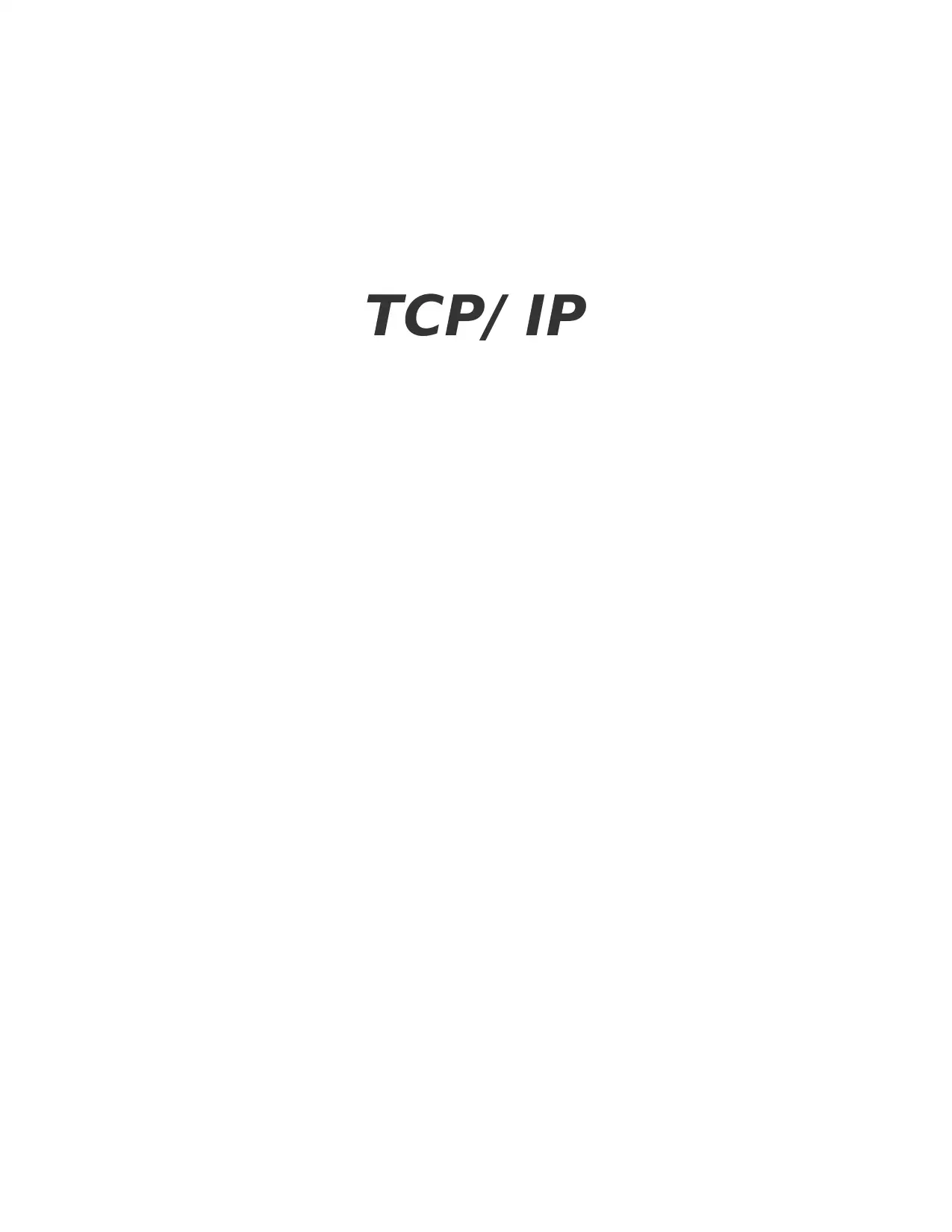
TCP/ IP
Paraphrase This Document
Need a fresh take? Get an instant paraphrase of this document with our AI Paraphraser

Table of Contents
Question 1........................................................................................................................................1
Question 2........................................................................................................................................2
Question 3........................................................................................................................................3
Question 4........................................................................................................................................3
Question 1........................................................................................................................................1
Question 2........................................................................................................................................2
Question 3........................................................................................................................................3
Question 4........................................................................................................................................3
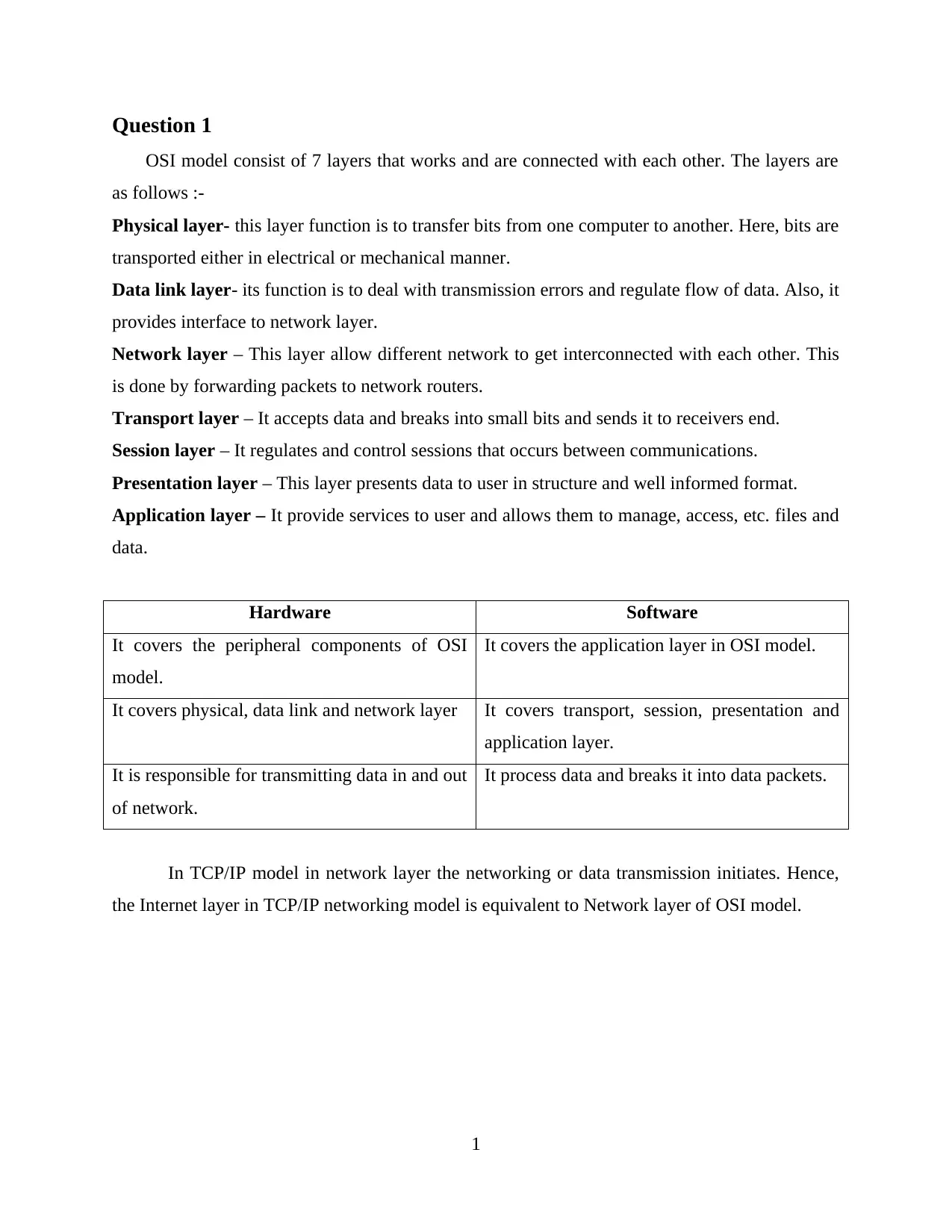
Question 1
OSI model consist of 7 layers that works and are connected with each other. The layers are
as follows :-
Physical layer- this layer function is to transfer bits from one computer to another. Here, bits are
transported either in electrical or mechanical manner.
Data link layer- its function is to deal with transmission errors and regulate flow of data. Also, it
provides interface to network layer.
Network layer – This layer allow different network to get interconnected with each other. This
is done by forwarding packets to network routers.
Transport layer – It accepts data and breaks into small bits and sends it to receivers end.
Session layer – It regulates and control sessions that occurs between communications.
Presentation layer – This layer presents data to user in structure and well informed format.
Application layer – It provide services to user and allows them to manage, access, etc. files and
data.
Hardware Software
It covers the peripheral components of OSI
model.
It covers the application layer in OSI model.
It covers physical, data link and network layer It covers transport, session, presentation and
application layer.
It is responsible for transmitting data in and out
of network.
It process data and breaks it into data packets.
In TCP/IP model in network layer the networking or data transmission initiates. Hence,
the Internet layer in TCP/IP networking model is equivalent to Network layer of OSI model.
1
OSI model consist of 7 layers that works and are connected with each other. The layers are
as follows :-
Physical layer- this layer function is to transfer bits from one computer to another. Here, bits are
transported either in electrical or mechanical manner.
Data link layer- its function is to deal with transmission errors and regulate flow of data. Also, it
provides interface to network layer.
Network layer – This layer allow different network to get interconnected with each other. This
is done by forwarding packets to network routers.
Transport layer – It accepts data and breaks into small bits and sends it to receivers end.
Session layer – It regulates and control sessions that occurs between communications.
Presentation layer – This layer presents data to user in structure and well informed format.
Application layer – It provide services to user and allows them to manage, access, etc. files and
data.
Hardware Software
It covers the peripheral components of OSI
model.
It covers the application layer in OSI model.
It covers physical, data link and network layer It covers transport, session, presentation and
application layer.
It is responsible for transmitting data in and out
of network.
It process data and breaks it into data packets.
In TCP/IP model in network layer the networking or data transmission initiates. Hence,
the Internet layer in TCP/IP networking model is equivalent to Network layer of OSI model.
1
⊘ This is a preview!⊘
Do you want full access?
Subscribe today to unlock all pages.

Trusted by 1+ million students worldwide
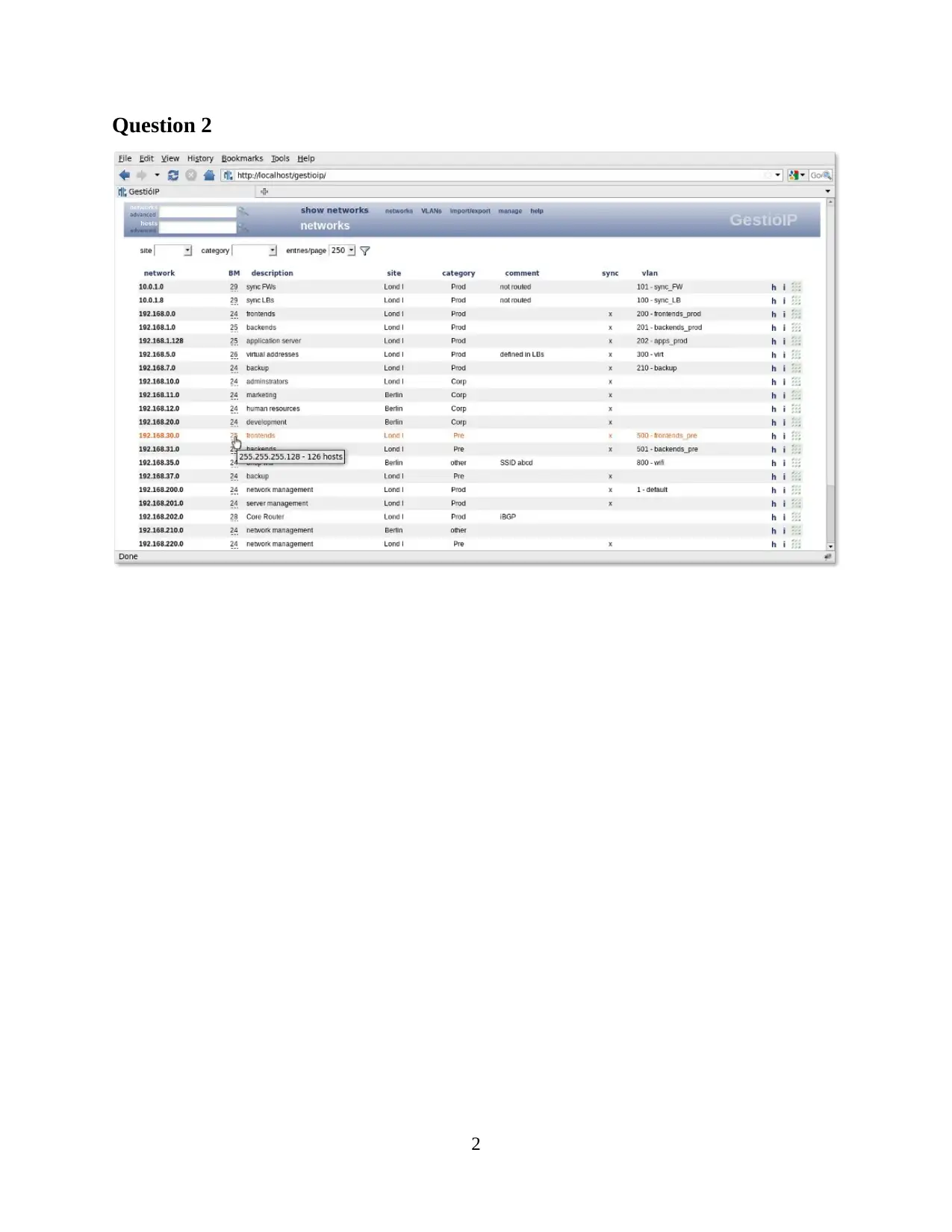
Question 2
2
2
Paraphrase This Document
Need a fresh take? Get an instant paraphrase of this document with our AI Paraphraser
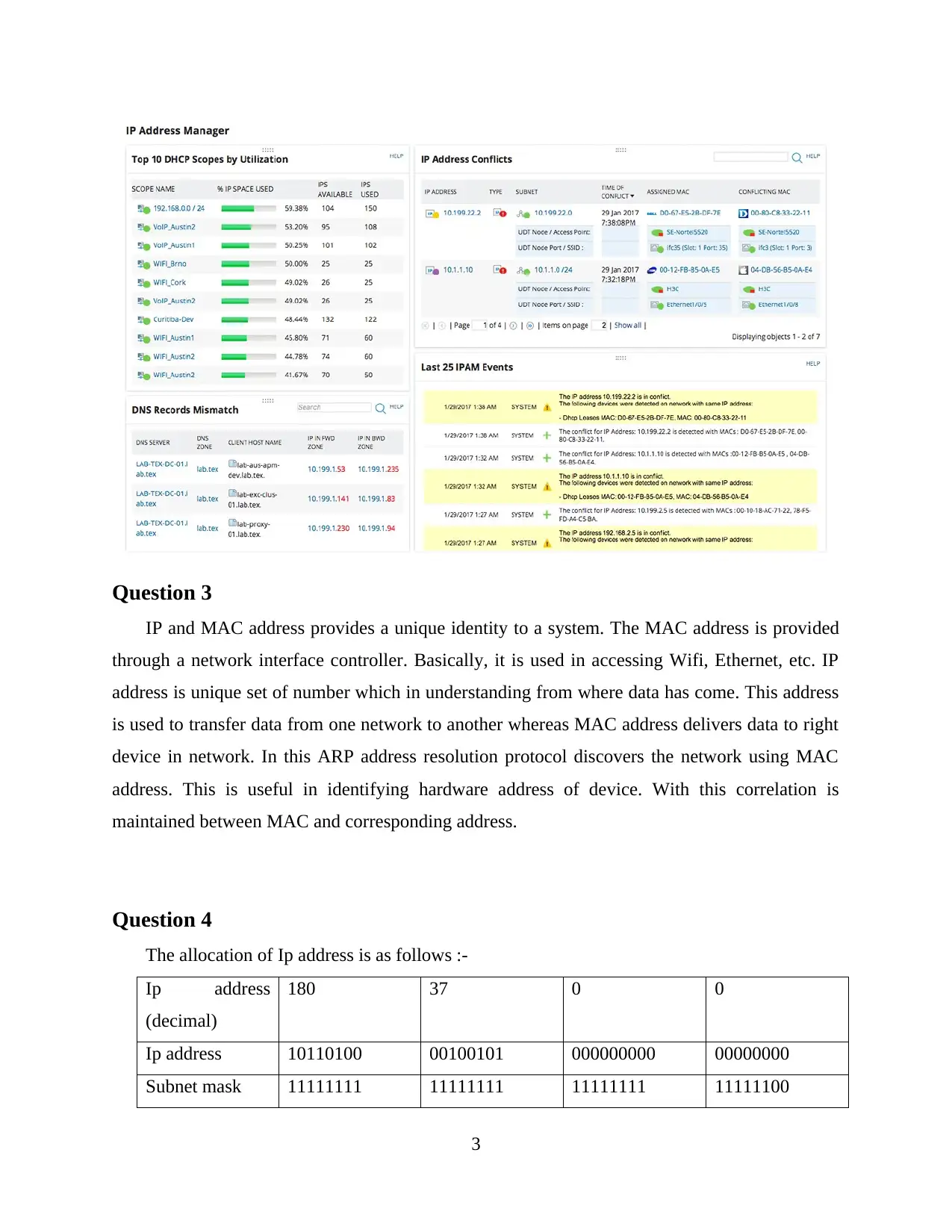
Question 3
IP and MAC address provides a unique identity to a system. The MAC address is provided
through a network interface controller. Basically, it is used in accessing Wifi, Ethernet, etc. IP
address is unique set of number which in understanding from where data has come. This address
is used to transfer data from one network to another whereas MAC address delivers data to right
device in network. In this ARP address resolution protocol discovers the network using MAC
address. This is useful in identifying hardware address of device. With this correlation is
maintained between MAC and corresponding address.
Question 4
The allocation of Ip address is as follows :-
Ip address
(decimal)
180 37 0 0
Ip address 10110100 00100101 000000000 00000000
Subnet mask 11111111 11111111 11111111 11111100
3
IP and MAC address provides a unique identity to a system. The MAC address is provided
through a network interface controller. Basically, it is used in accessing Wifi, Ethernet, etc. IP
address is unique set of number which in understanding from where data has come. This address
is used to transfer data from one network to another whereas MAC address delivers data to right
device in network. In this ARP address resolution protocol discovers the network using MAC
address. This is useful in identifying hardware address of device. With this correlation is
maintained between MAC and corresponding address.
Question 4
The allocation of Ip address is as follows :-
Ip address
(decimal)
180 37 0 0
Ip address 10110100 00100101 000000000 00000000
Subnet mask 11111111 11111111 11111111 11111100
3
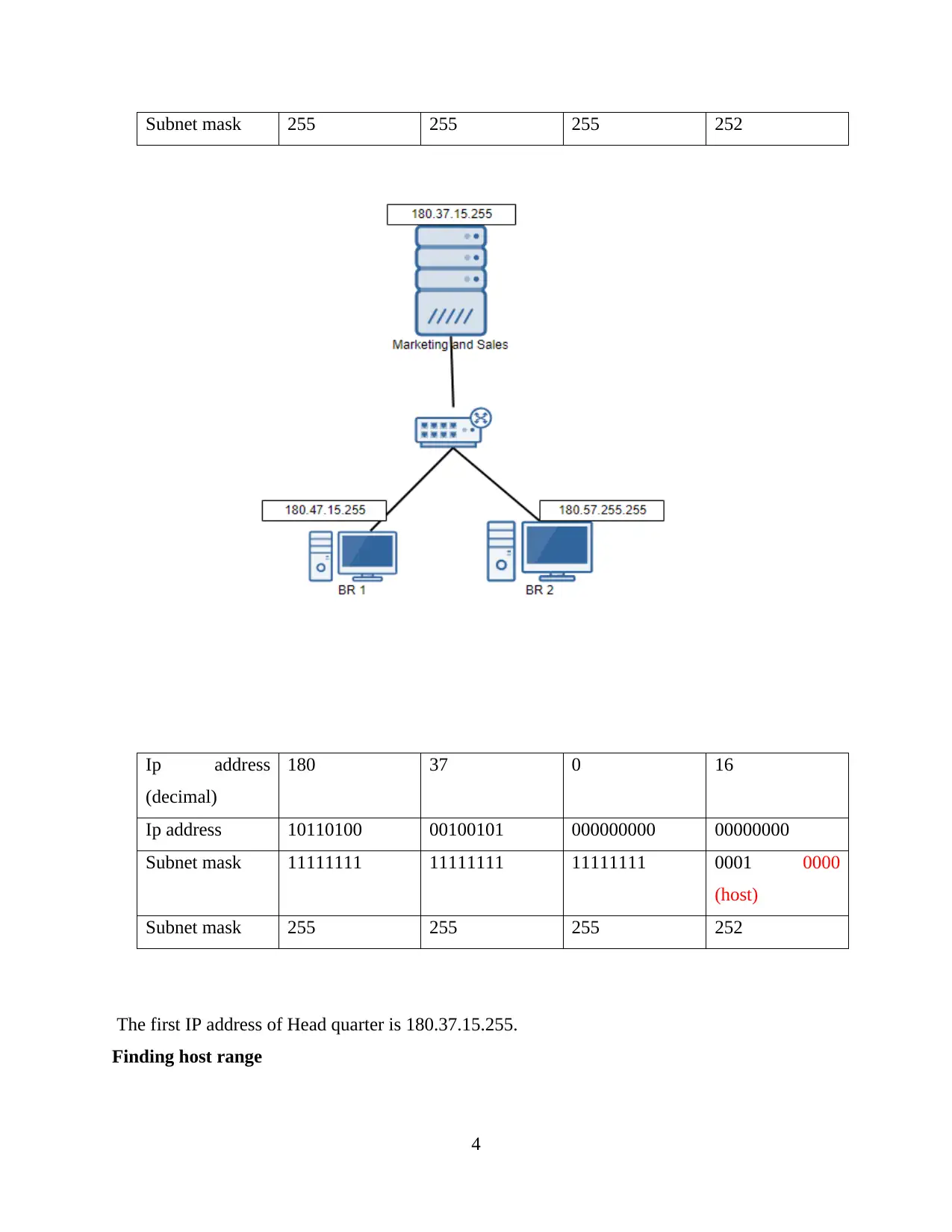
Subnet mask 255 255 255 252
Ip address
(decimal)
180 37 0 16
Ip address 10110100 00100101 000000000 00000000
Subnet mask 11111111 11111111 11111111 0001 0000
(host)
Subnet mask 255 255 255 252
The first IP address of Head quarter is 180.37.15.255.
Finding host range
4
Ip address
(decimal)
180 37 0 16
Ip address 10110100 00100101 000000000 00000000
Subnet mask 11111111 11111111 11111111 0001 0000
(host)
Subnet mask 255 255 255 252
The first IP address of Head quarter is 180.37.15.255.
Finding host range
4
⊘ This is a preview!⊘
Do you want full access?
Subscribe today to unlock all pages.

Trusted by 1+ million students worldwide
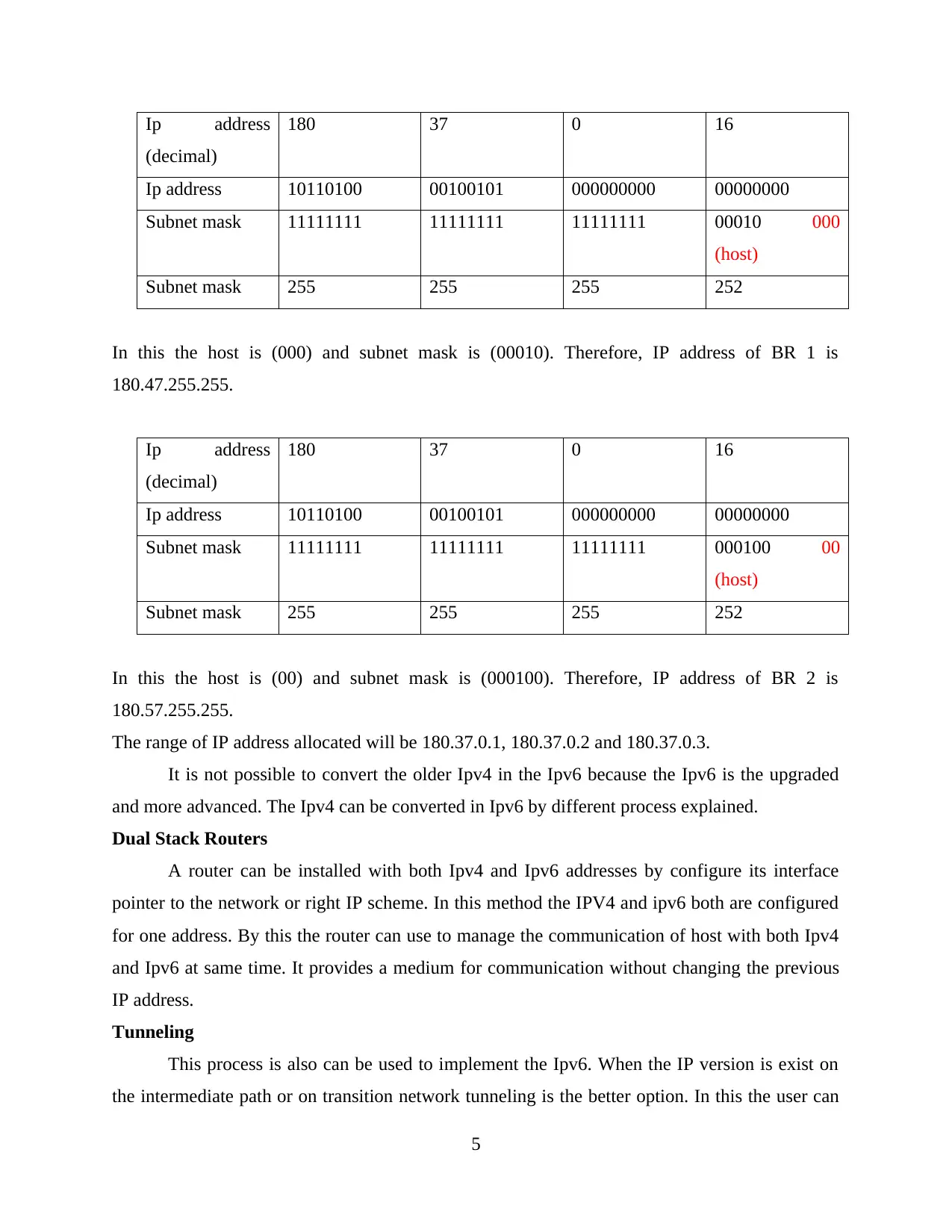
Ip address
(decimal)
180 37 0 16
Ip address 10110100 00100101 000000000 00000000
Subnet mask 11111111 11111111 11111111 00010 000
(host)
Subnet mask 255 255 255 252
In this the host is (000) and subnet mask is (00010). Therefore, IP address of BR 1 is
180.47.255.255.
Ip address
(decimal)
180 37 0 16
Ip address 10110100 00100101 000000000 00000000
Subnet mask 11111111 11111111 11111111 000100 00
(host)
Subnet mask 255 255 255 252
In this the host is (00) and subnet mask is (000100). Therefore, IP address of BR 2 is
180.57.255.255.
The range of IP address allocated will be 180.37.0.1, 180.37.0.2 and 180.37.0.3.
It is not possible to convert the older Ipv4 in the Ipv6 because the Ipv6 is the upgraded
and more advanced. The Ipv4 can be converted in Ipv6 by different process explained.
Dual Stack Routers
A router can be installed with both Ipv4 and Ipv6 addresses by configure its interface
pointer to the network or right IP scheme. In this method the IPV4 and ipv6 both are configured
for one address. By this the router can use to manage the communication of host with both Ipv4
and Ipv6 at same time. It provides a medium for communication without changing the previous
IP address.
Tunneling
This process is also can be used to implement the Ipv6. When the IP version is exist on
the intermediate path or on transition network tunneling is the better option. In this the user can
5
(decimal)
180 37 0 16
Ip address 10110100 00100101 000000000 00000000
Subnet mask 11111111 11111111 11111111 00010 000
(host)
Subnet mask 255 255 255 252
In this the host is (000) and subnet mask is (00010). Therefore, IP address of BR 1 is
180.47.255.255.
Ip address
(decimal)
180 37 0 16
Ip address 10110100 00100101 000000000 00000000
Subnet mask 11111111 11111111 11111111 000100 00
(host)
Subnet mask 255 255 255 252
In this the host is (00) and subnet mask is (000100). Therefore, IP address of BR 2 is
180.57.255.255.
The range of IP address allocated will be 180.37.0.1, 180.37.0.2 and 180.37.0.3.
It is not possible to convert the older Ipv4 in the Ipv6 because the Ipv6 is the upgraded
and more advanced. The Ipv4 can be converted in Ipv6 by different process explained.
Dual Stack Routers
A router can be installed with both Ipv4 and Ipv6 addresses by configure its interface
pointer to the network or right IP scheme. In this method the IPV4 and ipv6 both are configured
for one address. By this the router can use to manage the communication of host with both Ipv4
and Ipv6 at same time. It provides a medium for communication without changing the previous
IP address.
Tunneling
This process is also can be used to implement the Ipv6. When the IP version is exist on
the intermediate path or on transition network tunneling is the better option. In this the user can
5
Paraphrase This Document
Need a fresh take? Get an instant paraphrase of this document with our AI Paraphraser
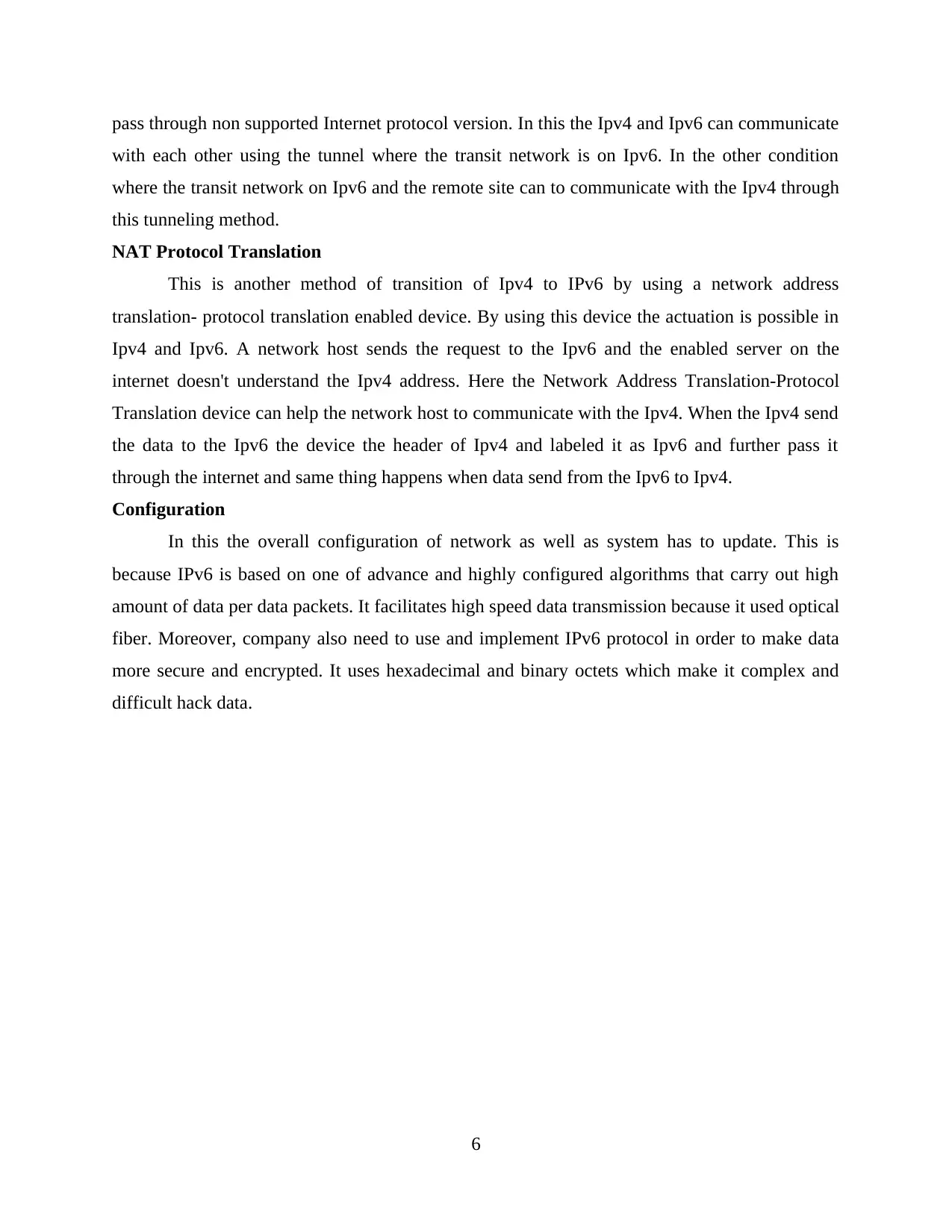
pass through non supported Internet protocol version. In this the Ipv4 and Ipv6 can communicate
with each other using the tunnel where the transit network is on Ipv6. In the other condition
where the transit network on Ipv6 and the remote site can to communicate with the Ipv4 through
this tunneling method.
NAT Protocol Translation
This is another method of transition of Ipv4 to IPv6 by using a network address
translation- protocol translation enabled device. By using this device the actuation is possible in
Ipv4 and Ipv6. A network host sends the request to the Ipv6 and the enabled server on the
internet doesn't understand the Ipv4 address. Here the Network Address Translation-Protocol
Translation device can help the network host to communicate with the Ipv4. When the Ipv4 send
the data to the Ipv6 the device the header of Ipv4 and labeled it as Ipv6 and further pass it
through the internet and same thing happens when data send from the Ipv6 to Ipv4.
Configuration
In this the overall configuration of network as well as system has to update. This is
because IPv6 is based on one of advance and highly configured algorithms that carry out high
amount of data per data packets. It facilitates high speed data transmission because it used optical
fiber. Moreover, company also need to use and implement IPv6 protocol in order to make data
more secure and encrypted. It uses hexadecimal and binary octets which make it complex and
difficult hack data.
6
with each other using the tunnel where the transit network is on Ipv6. In the other condition
where the transit network on Ipv6 and the remote site can to communicate with the Ipv4 through
this tunneling method.
NAT Protocol Translation
This is another method of transition of Ipv4 to IPv6 by using a network address
translation- protocol translation enabled device. By using this device the actuation is possible in
Ipv4 and Ipv6. A network host sends the request to the Ipv6 and the enabled server on the
internet doesn't understand the Ipv4 address. Here the Network Address Translation-Protocol
Translation device can help the network host to communicate with the Ipv4. When the Ipv4 send
the data to the Ipv6 the device the header of Ipv4 and labeled it as Ipv6 and further pass it
through the internet and same thing happens when data send from the Ipv6 to Ipv4.
Configuration
In this the overall configuration of network as well as system has to update. This is
because IPv6 is based on one of advance and highly configured algorithms that carry out high
amount of data per data packets. It facilitates high speed data transmission because it used optical
fiber. Moreover, company also need to use and implement IPv6 protocol in order to make data
more secure and encrypted. It uses hexadecimal and binary octets which make it complex and
difficult hack data.
6
1 out of 8
Related Documents
Your All-in-One AI-Powered Toolkit for Academic Success.
+13062052269
info@desklib.com
Available 24*7 on WhatsApp / Email
![[object Object]](/_next/static/media/star-bottom.7253800d.svg)
Unlock your academic potential
Copyright © 2020–2025 A2Z Services. All Rights Reserved. Developed and managed by ZUCOL.




